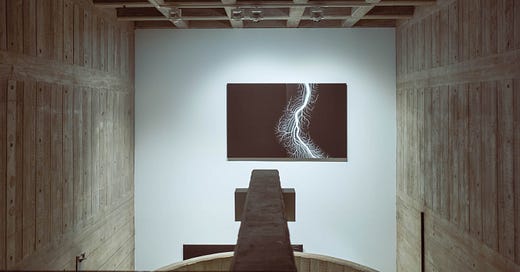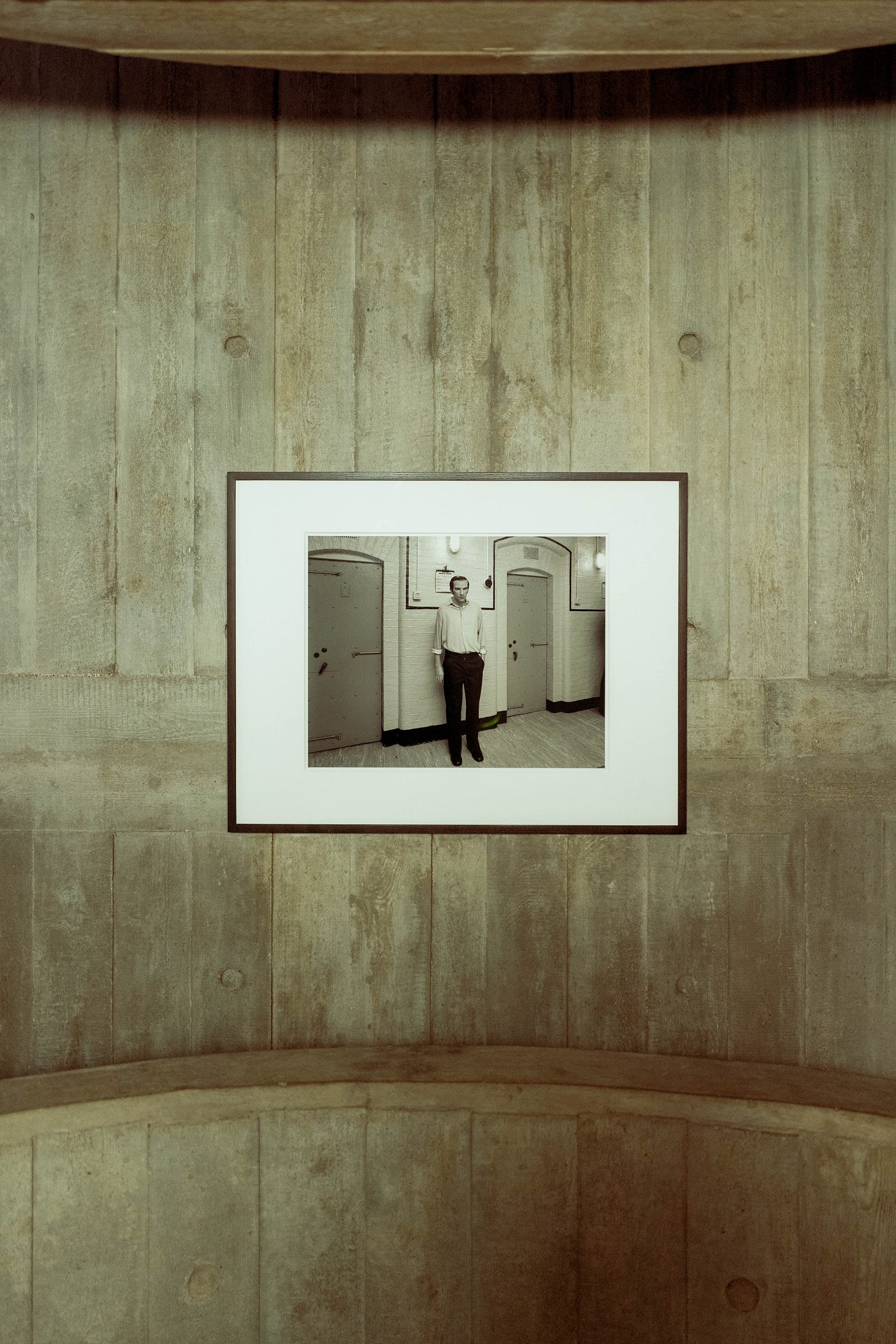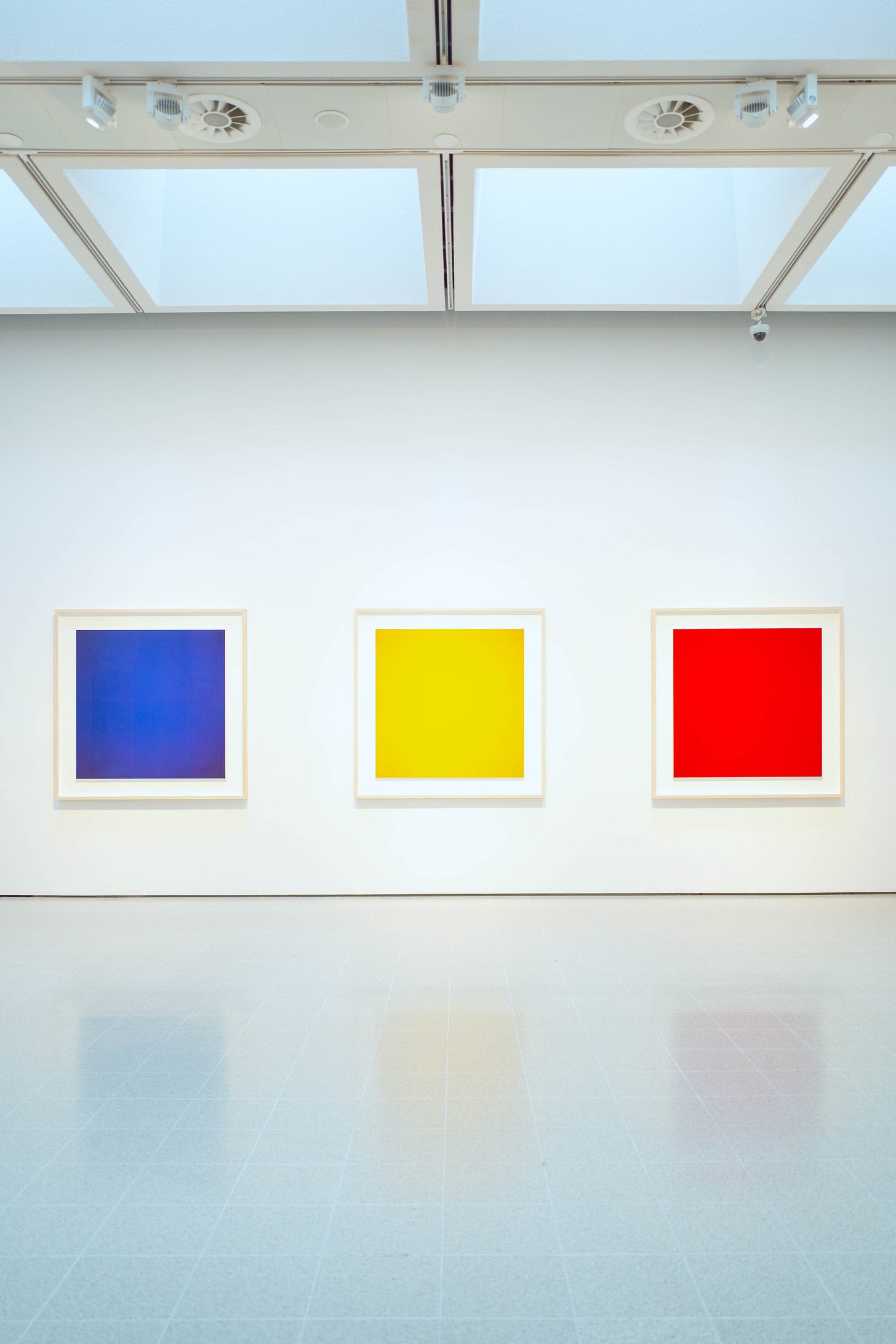No-one has ever made photographs like these
The enthralling Hiroshi Sugimoto exhibition at the Hayward Gallery
“There is no decisive moment in my photographs, only the melting of time.”
Hiroshi Sugimoto at the Hayward Gallery is one of the most enthralling exhibitions I’ve seen in a while.1
As the curator, Ralph Rugoff, says “no-one has ever made photographs like these.”
Sorry
I feel a little guilty writing about it. It finishes on 7th January so you’ll need to hotfoot it to London to see its final days. Or you can follow the links I share, but they just won’t have the same large-scale impact as seeing them in the perfect ambience of the Hayward Gallery. Sorry.
The gallery
Ah yes, the brutiful, brutalist Hayward Gallery which was the subject of an earlier Substack. 2
It’s a quiet, spacious gallery. Not for them the scrum of a blockbuster show where people view the highlights through their mobile screen and barely pause to absorb what they see. Here is quiet contemplation. White walls, naturally lit spaces and seating placed at thoughtful intervals.
The exhibition
Hiroshi Sugimoto was born in Tokyo in 1948 and this is his first retrospective in Britain. He often uses photographic techniques from the 19th century (including an old wooden view camera), to question our concept of time.
The series Dioramas are photos which look to have been made before humans ruled the earth. In fact, they are scenes from the American Museum of Natural History in New York in which he has made the animals appear to be alive.
Seascapes are about experiencing what our ancestors saw. Just the sea and the sky and the light from the moon or the sun. They are spiritually absorbing.
His series Theaters are no fleeting moments but a two hour photo with an exposure time of the length of a film (or 172,800 images made into one single frame).
Portraits of Henry VIII, Napoleon, Salvador Dali, Oscar Wilde and more look like he was with the sitter in a studio yesterday. They are waxworks from Madame Tussauds.
As is the lifelike fear which comes from the basement hanging of the gruesome Chamber of Horrors series.
Lightning Fields takes inspiration from the experiments of my fellow Wiltshire resident and photography pioneer, Henry Fox Talbot3, to capture electrical currents on photosensitive plates. And here you have the essence of photography - light captured in millisecond.
Opticks uses Polaroid film (from one of the last batches they made before going bust), in which he tried to get to the root of colour and our perception of it.
These are large scale photos which reward your time. Details and thoughts emerge as you gaze around the frame. They open you up to the possibilities of what can be done with unbridled imagination and a century old camera.4
“My camera is a Time Machine. A camera can be able to stop the world, in that we stop the world and then investigate what is there, carefully.”
Hiroshi Sugimoto
A thrilling hodgepodge
In August 2020 I took my first trip to London after lock down. Art galleries had just reopened and I needed a fix. It was a fortuitous day to choose. The sun was shining and because Covid restrictions were still in place, I had the rare opportunity of photographing normally busy places without people.
Henry Fox Talbot’s family pile is a few miles away from me in Lacock, Wiltshire. It’s also the location for many films including Harry Potter and Pride & Prejudice.
Laura Cumming’s 5* review in the Guardian sums up why this exhibition is so magical.
Photos taken at the Hayward Gallery on Saturday 30th December 2023 while pondering on what I had seen.











Absolutely love his work, a total inspiration for me. Thanks for sharing. I’ve seen some of the work in person in New York City and yes it’s wonderful to see up close, and not on a digital screen.
Sounds fascinating and is that Graham Young - the teacup poisoner - I see? Went to quite a contrast in photography exhibitions myself yesterday at Newcastle's Laing Gallery. First Chris Killip's 'Last Ships' and then 'Yevonde: Life and Colour'. I'll probably offer a meander on the stark contrast between the exhibitions at some point but they both in a very different way mark the passing of two elements of society.